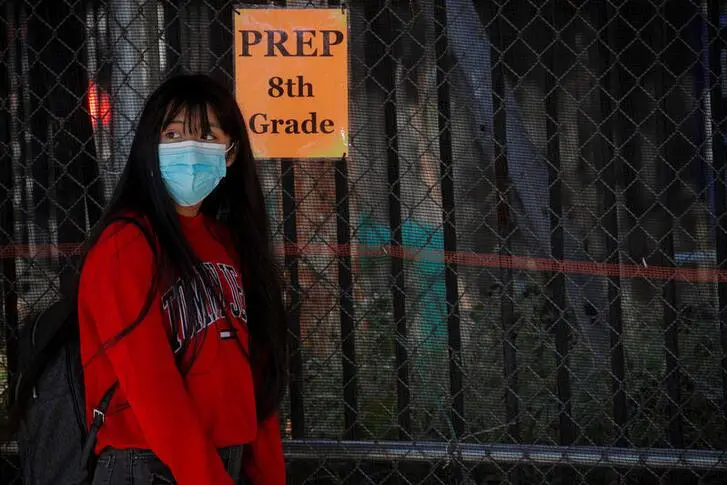PHOTO
I distinctly remember the heat wave that hit Europe in the summer of 2003. I had been spending several weeks every summer doing research in France, so I was quite familiar with the weather there: Daytime temperatures in the lower 30s Celsius, occasionally peaking in the upper 30s. You can imagine my shocked reaction when 15,000 people died there (among at least 50,000 in Europe) during the early days of August, when temperatures hit 40 C for days. Having lived in the Gulf for years, 40 C did not seem like conditions that could kill tens of thousands.
More detailed reports, however, explained that most of the dead involved elderly people who lived alone and had not been prepared as to how to behave in very hot conditions (drink and wash all day) or how to notice worrying signs in one’s body and immediately call for help.
That heat wave brought to the fore an important social development of the second half of the 20th century: A big increase in the number of single-person households. A survey conducted in the US in 2018 found 35.7 million Americans living alone, making up 28 percent of households (44 percent in Manhattan, New York City). Similar trends have been reported in northern Europe.
Further studies highlighted a related — but subtly different — phenomenon: The so-called loneliness epidemic and its serious health effects. A famous study equated the effect with smoking 15 cigarettes a day. Many ailments have been associated with loneliness, such as depression, anxiety, heart conditions, substance abuse, dementia, and self-harm. In fact, any serious illness will be worsened by loneliness and the absence of social support. No surprise then that, in 2018, the UK appointed a minister of loneliness.
Now, before I relate all this to the coronavirus disease (COVID-19), I must make two important remarks.
First, loneliness is not the same as living alone. One can live with a spouse and even children, have a social network, and still feel lonely. And, conversely, a person can live alone but have such a rich social life that they don’t feel lonely. A simple distinction is: Living alone just describes one’s living conditions, whereas loneliness describes one’s sense of having fewer or poorer social relations than one wishes to have. This subjective feeling is affected by one’s level of happiness and success, and observations of how others live and interact.
My second remark is that more recent studies have weakened the causal link between loneliness and ailments. There is definitely a correlation with depression, heart conditions, and so forth, but it is not clear whether one causes the other or whether there are underlying conditions that relate the two.
The issue has recently started to receive attention in the Arab world, particularly in relation to other social trends, such as high rates of divorce, sociopolitical strife in several countries, and the impact of social media on personal relations. For instance, one may be surprised to learn that 10 percent of young people (ages 16 to 24) report feeling lonely “often or always,” compared to only 3 percent of people aged 65 or more. Clearly, constantly comparing one’s life to others’ and the distorted impressions given by social media are having a negative effect on youngsters.
Another surprising result of recent studies is that loneliness has not increased in recent decades, contrary to what we may think. Again, perceptions and the media have distorted realities.
The problem is that loneliness is often difficult to acknowledge, much less discuss. People unconsciously consider loneliness to be a sign of social failure.
Now, the COVID-19 pandemic has both exacerbated the situation and shed light on it. On the one hand, “social distancing” — an unfortunate phrase, as we should really be saying “physical distancing” — has made it so much more difficult for people to connect, except through screens. On the other hand, COVID-19 has at least brought to the fore the phenomenon of people living alone, though not necessarily lonely.
A few polls have been conducted about the psychological and social impact of lockdowns and social distancing. In the US, between 20 and 50 percent of people have reported feeling lonelier since the pandemic hit, with men and women equally affected. There are additional, compounding concerns in America, including the large number of old people who live in nursing homes, where visits have been drastically reduced, if not stopped, while the easy availability of firearms could lead to more suicides — already a serious problem in the West.
But haven’t video chats alleviated the loneliness problem? Don’t people, young and old, now connect more to others, overcoming physical distances? The impact has been mixed. First, not everyone is video/internet savvy or even literate; second, video chats are actually superficial connections, rarely establishing meaningful friendships and conversations, and many youngsters report feeling worse after online chats, realizing how poor their relations are.
To sum up, loneliness is a real and serious problem in modern societies. COVID-19 has shed a harsh light on it, but at least this is being discussed now and not considered a shameful situation or a failure to be hushed.
Let us all try to strengthen and deepen contacts and relations, using all the tools at our disposal, including meeting more often in open spaces, calling with phones and cameras, etc. And let us do our best to erase the stigma of loneliness as a social failure.
- Nidhal Guessoum is a professor at the American University of Sharjah, UAE. Twitter: @NidhalGuessoum
Copyright: Arab News © 2020 All rights reserved. Provided by SyndiGate Media Inc. (Syndigate.info).












